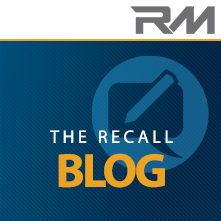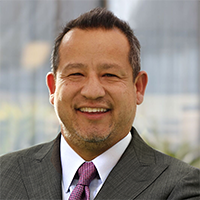Servicing Cars and Pulling Teeth
Servicing Cars and Pulling Teeth
A Blog Post by Sean Reyes, Chief Marketing Officer for Recall Masters
We’ve all read this stat somewhere – the average consumer would rather visit the dentist than to visit a garage for vehicle repairs. I don’t remember where this data point was first uncovered, but it really doesn’t surprise me. Given the hit to the wallet, vehicle servicing probably causes significantly more financial anxiety than oral care. But, the reluctance is not limited to financial considerations. With both dental insurance and a current vehicle warranty, there’s still trepidation about a visit to the shop. If you’re looking for validation in the data, turn to data that tracks recall compliance.
Annually, recalls are being repaired at a rate between 29 – 33%. Let me translate – of all the recalls that are announced in a calendar year, 29 – 33% of the vehicles affected are repaired within that same calendar year. Is that more or less than what you would have guessed? To clarify, recall repairs (parts and labor) don’t come at a cost to the vehicle owner. It’s the vehicle manufacturer that pays dealerships for these repairs at the warranty rates the dealership has currently negotiated. In short, the vehicle owner pays nothing – recall repairs are free. Why are two-thirds of these recalls still outstanding if they come at no cost to the vehicle owner?
Let’s isolate this data to a National Highway Traffic Safety Administration (NHTSA) recall, which must directly correlate to an eminent risk to drivers, passengers or others who share the road. It does not mean that 100% of these vehicles will kill or injure 100% of the time. A NHTSA investigation isolates VINs that are affected by a specified manufacturing defect. While the defect may or may not be present, along with the eminent risk, NHTSA simply prescribes the inspection and/or remedy for which dealers perform in order to secure recall compliance (clearing the recall).
Recalls are a threat to safety and vehicle owners have a responsibility to have them repaired, albeit with limited regulatory mandates. The two-thirds of vehicles that are not repaired are layered onto the previous two-thirds from the year before. Year after year, recalls are being cleared but not at a rate that suggests we’re getting ahead of the problem. This is especially true as the average age of a vehicle in the United States is now beyond 12 years old. At the rate that vehicles change hands in the secondary market, older vehicles add to the danger because current owners are difficult to locate. Once that vehicle is no longer in the possession of the original owner, notifying the current owner is a significant barrier to recall compliance.
Without a national vehicle registration database, current owner data simply isn’t available. Only a federally-compliant safety company like Recall Masters can aggregate 2nd/3rd/4th generation owner data and notify consumers of a potential safety risk. The inability to reach current owners explains why many recalls are outstanding, accounting for an estimated 72 million vehicles on the road today with an open recall. That translates to more than one in four vehicles on the road today.
Here’s the bigger question – why are the vast majority of vehicle owners ignoring recall notifications? When OEMs coordinate notification campaigns, they are seeing a little more than a 2% response rate. At Recall Masters, depending on the brand, we’re seeing 12 – 18% response rate. That’s a significant increase over the factory, but comes with a significant investment in a multi-channel, multi-touchpoint communications effort which pushes all consumer traffic into a centralized contact center for repair appointments. We’re having to walk that consumer by the hand for that last mile in order to secure compliance. It’s working. However, considering that the repairs are free and the defects are dangerous, I’m challenged to find better incentives for vehicle owners to get their recalls cleared.
As an industry, the question we should be asking ourselves is why the remaining 80+% of current vehicle owners are unphased by a dangerous recall and why they’re refusing to get it fixed for free? Does a visit to the dealership strike so much ambivalence that 4 out of 5 owners are willing to risk their health (or life), even when the remedy is being offered for free? That’s a head-scratcher we need to have answers for. Every single day, especially as the economy tightens, more and more consumers are flocking to the aftermarket for repairs and servicing. Selling consumers on the value of vehicle care is one task, convincing them to get it done at a dealership is another. With recalls, that work has to be done at a franchise dealer. If there were costs involved, recall compliance rates would be even more disappointing.
For franchise dealers, recalls present a rare opportunity to win over consumers without having to compete with the aftermarket. And, if dealers have been able to keep up with their filings, 49 of the 50 states in the nation have laws that require the OEM to reimburse the dealership at retail rates for both parts and labor. It’s great revenue and the potential is even better. Most dealers don’t take an aggressive stance on recall management, content with the 2% that spill in from the OEM effort or when the vehicle happens to show up in the service drive. What they fail to understand is that, at their current rate of defection, their customer acquisition strategy is either insufficient or comes at too high a price.
In addition to doing right by vehicle owners in relieving a hazardous situation, recalls invite consumers back to the dealership to experience a heightened level of service. Savvy dealerships will roll out the red carpet for these consumers, highlighting the value proposition of servicing at a franchised dealership. Factory-trained technicians and factory-crafted parts just aren’t enough to win the battle alone. The same can be said of a recall repair – just because it comes at no cost to the consumer, it doesn’t mean that your store is the preferred provider. If anything, it’s this recall event that allows your store to show off what they’ve been missing.
What is that user experience for the consumer? How convenient was the event? Was the process easy for the consumer to navigate? Were the parts in stock? Did your service advisors acknowledge the inconvenience of a recall or were they solely focused on upsell opportunities? Your dealership is being evaluated on this and subsequent visits, so your team has to be focused on serving in the best interest of the consumer. Here’s a warning – if the consumer perceives that an upsell opportunity is disguised as a recall event, the damage to trust and transparency is irreparable.
Great retention is an objective that requires a long-term vision. Many dealers are only now experiencing the highs and lows of a loyal customer base as vehicle sales plummet. Will your dealership be able to lean on a loyal customer base for stable and consistent sales and service transactions, or will your store struggle like a dentist visit where all the teeth will have been pulled?
About the Author
|
|
Sean Reyes oversees all marketing efforts at Recall Masters as Chief Marketing Officer. Sean also serves as the host of the FixedOps UX, a “minicast” that revolves around the fixed operations ecosystem and the tactics that build a better user experience for customers, dealership staff and other stakeholders. Sean’s experience spans more than 35 years of business development and strategic marketing experience, having developed go-to-market products and solutions for the automotive, healthcare, insurance, finance and technology industries to serve Fortune 1000 clients like American Express, Toshiba, Western Digital, Cox Communications, Novartis, Microsoft, IBM, Compaq, HP, National General Insurance, MyCustomer Data, DigniFi and several automotive affiliates and dealerships. Sean lives in Napa, CA with his wife Kathryn and spends his free time hiking, kayaking, playing guitar, going to concerts, rebuilding project cars and helping his kids embark on adulthood. |


